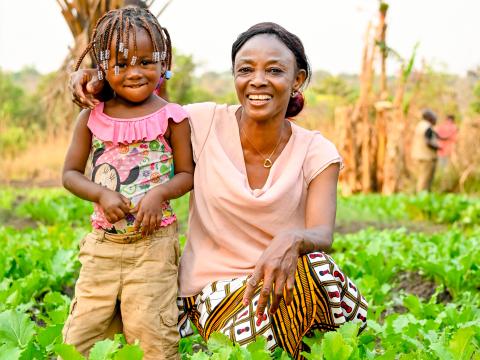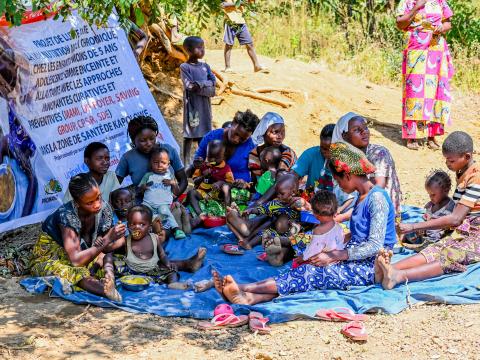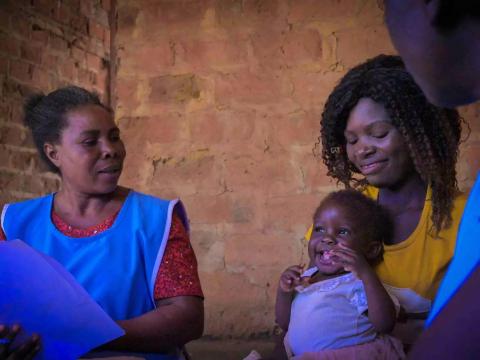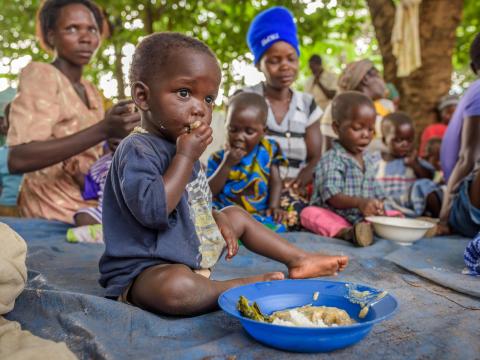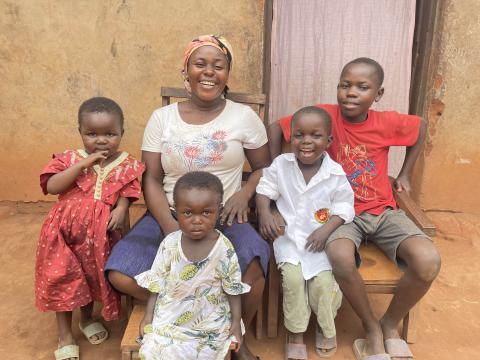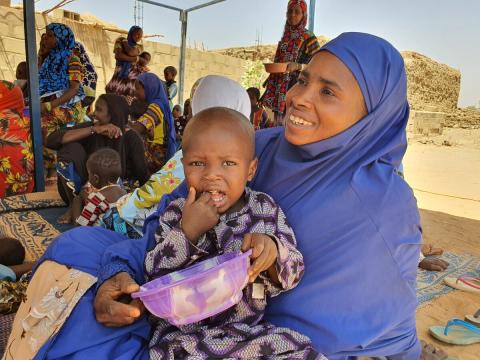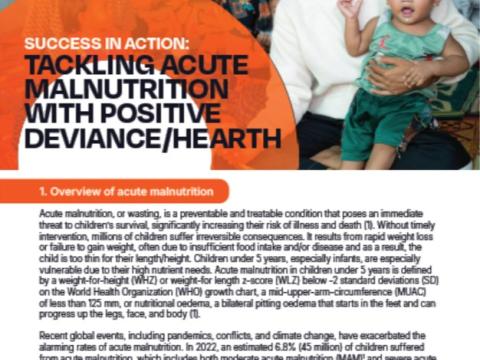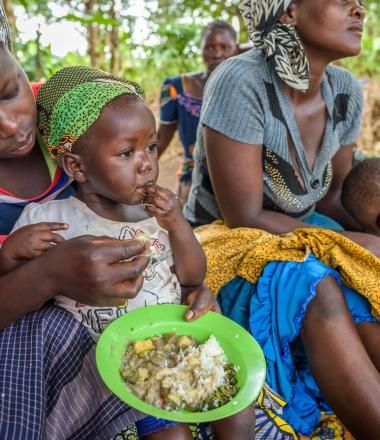
Positive Deviance/Hearth
Positive Deviance/Hearth
Positive Deviance/Hearth (PDH) is a community-based and food-based approach with three interrelated goals:
- To reduce the prevalence of malnutrition among children under five years.
- To build local capacity to treat malnourished children and sustain the rehabilitation of children.
- To prevent future malnutrition among all children in the community.
In 2024, more than 49,100 at risk and underweight children under five years were enrolled into PDH programmes in 20 countries, with 54% fully rehabilitated in just three months (data from 20 of the 21 countries implementing PDH).
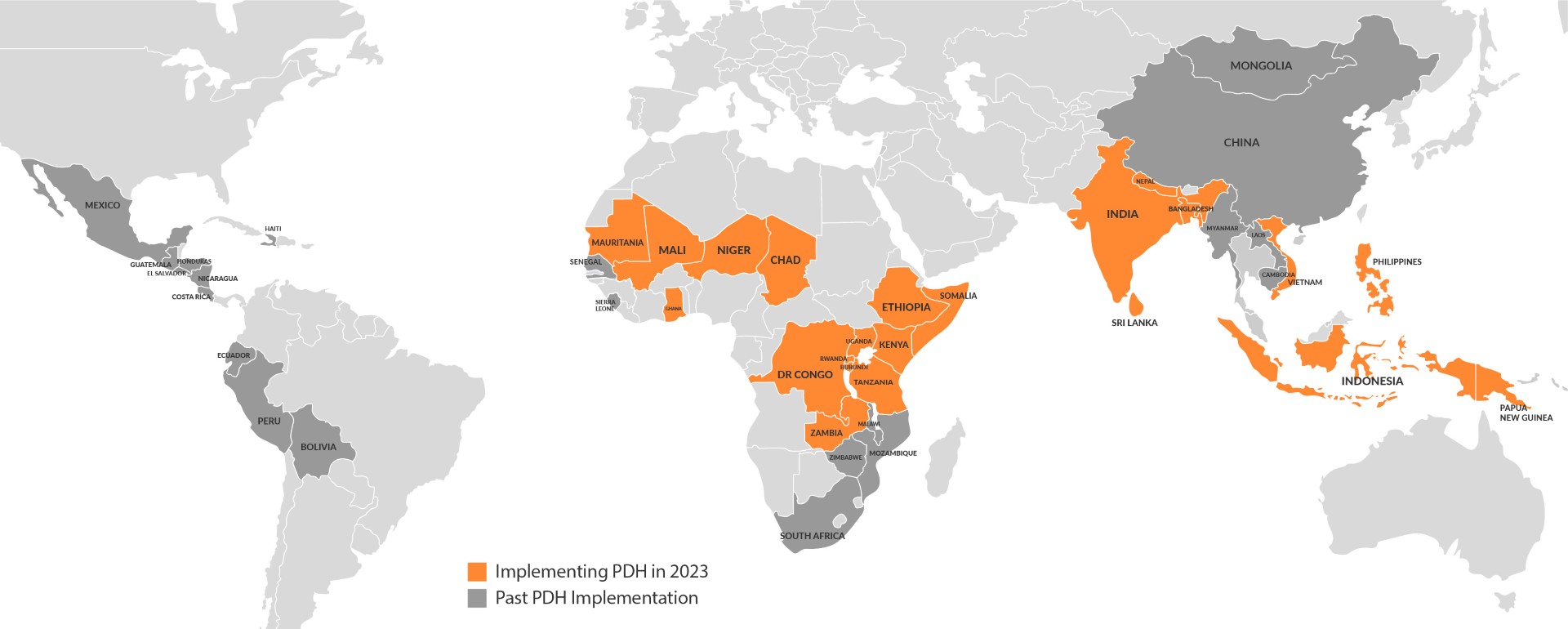
Over the past 10 years, World Vision treated more than 372,000 undernourished children under 5 years in 44 countries using only locally-available nutritious foods.
‘Positive deviance’ means straying from the norm, but in a beneficial way. Despite stark poverty and food scarcity, some caregivers find ways to raise well-nourished children. Understanding what these ‘positive deviant families’ are doing differently from the caregivers of malnourished children in the same community is key. This inquiry often identifies positive practices that are unique to that context, such as Vietnamese mothers collecting shrimp for their children while working in rice paddies, Ecuadorian women pre-masticating meat before giving it to their children, and mothers in Democratic Republic of Congo feeding their children dried and powdered caterpillars in their porridge. Families with malnourished children are then supported to adopt these positive practices through hands-on nutrition education and rehabilitation sessions conducted in the home (‘hearth’) of a community volunteer.
Hearth is the 10 to 12 day rehabilitation and education session for underweight and moderately wasted children and their primary caregivers. Grandmothers and fathers are also involved during the Hearth sessions in many contexts. During hearth sessions, the children are fed nutritious meals as an extra meal, based on locally available, low-cost nutritious foods and positive deviant foods, which the caregivers prepare together using ingredients they contribute. The caregivers also listen to one key Hearth message per day, for a total of six messages that are local solutions identified in positive deviant households that address the major challenges contributing to malnutrition in the community. PDH encourages behaviour change through practice by doing. As children respond to improved nutrition by gaining appetite, energy and weight, their families experience the value of the positive deviant practices first-hand. After the Hearth session, volunteers continue to monitor the children’s growth and support the families to apply the new behaviours they learned at home and help overcome any barriers.
World Vision has implemented Positive Deviance Hearth in 40 countries since 1999. This approach is one of World Vision’s core project models in nutrition, and is currently being used in 20 countries. WV began implementing PDH+ in 2021; the ‘plus’ component includes additional prevention interventions integrated with PDH. These interventions can include regular or decentralised growth monitoring and promotion, infant and young child feeding counselling, mother support groups, nurturing care groups, biofortification, kitchen gardens, micronutrient powders, animal revolving funds, and savings groups.
Cost of Programming
Costs for PDH integrated with food security include significant investment initially in training and start-up costs, and remain high as the activities are scaled up in each fiscal year. Cost analysis from area programmes in Bangladesh, Honduras, India, and Mali show a per capita cost ranging from $0.73 in Mali to $4.86 in India and $9 in Bangladesh. Up to 80% of the overall programme cost in India was for food production activities (animal and garden inputs).
